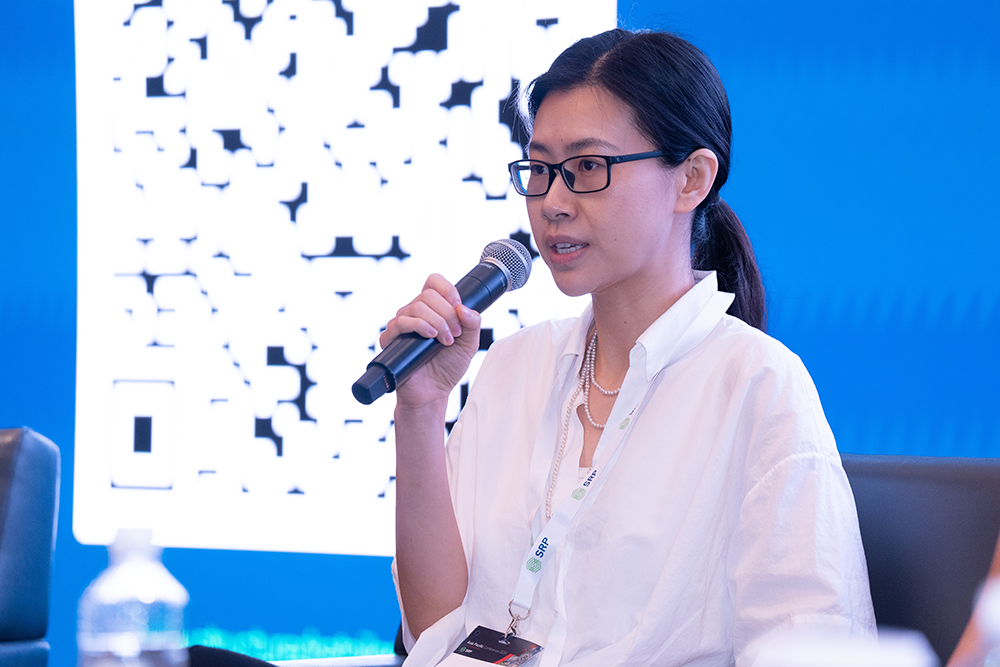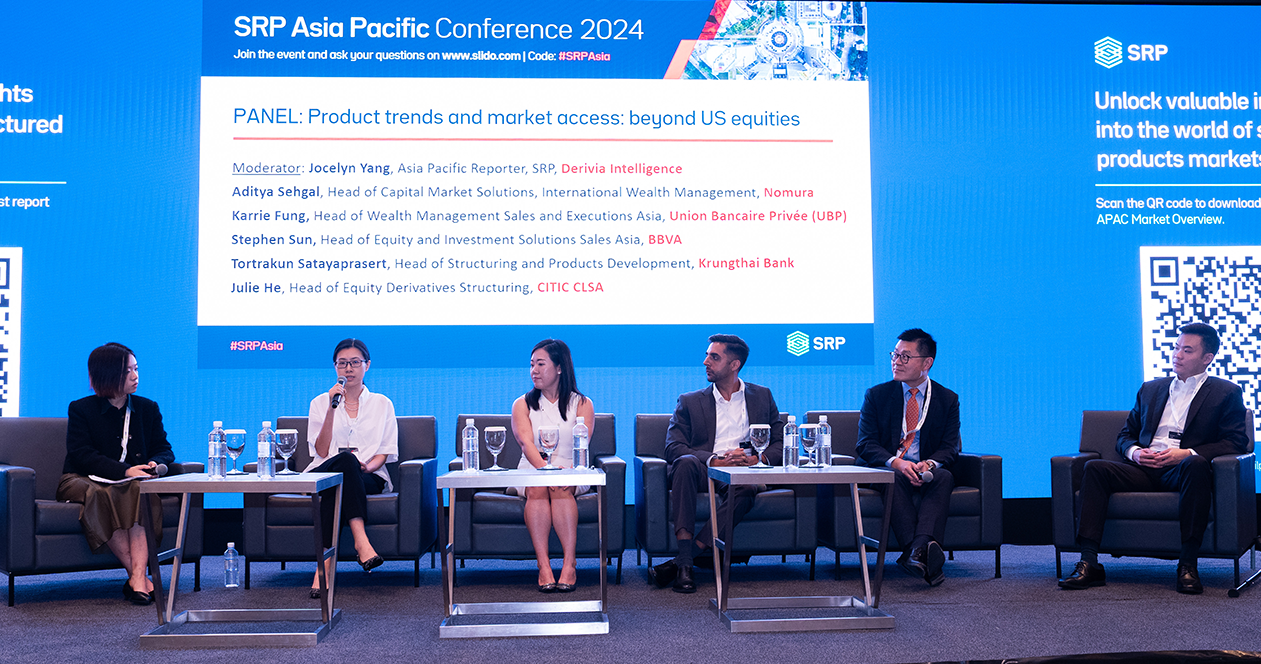Senior executives from the buy-side and sell-side of the structured product industry discussed diversifying underlying and how to navigate trends beyond the US stocks at the SRP Asia Pacific conference held in Singapore last month.
While the strong momentum of US equities remains one of the focuses in the Asia market, Japan has lured structured product market participants in the falling yen and relatively low interest rates environment this year, Stephen Sun (pictured), head of equity and investment solutions sales Asia at BBVA, kicked off the panel discussion.
Although the Bank of Japan (BOJ) already did the rate hike, it is still very low - Stephen Sun, BBVA
“Although the Bank of Japan (BOJ) already did the rate hike, it is still very low,” Sun said on stage. “From the clients’ perspective, when they need to diversify, they look for ‘Okay, why not like borrowing some yen and buying some Japanese equities?’”
Japan’s benchmark Nikkei 225 index has soared over 16% year-to-date. And the macro level isn’t the only driver. Some industrial, manufacturing, or technology-focused stocks in Japan have also seen a rise thanks to the AI boom, according to Aditya Sehgal (pictured below), head of capital market solutions, international wealth management at Nomura.
“Clients who essentially are coming to us saying, ‘Don’t show me US names, show me beneficiaries of names in the region’ and that some of the Japanese names have actually had actually done extremely well in that space… when it comes to converting this [trend] into a structured product,” the senior executive said.
With the advantage in the home market, Sehgal noted that the house has been leveraging the trend to design customised thematic indices tracking Japanese stocks and structuring them into pegged delta-one products and principal-protected notes.
“Some of [Japanese stocks] are dividend paying [and] the forwards tend to be pretty low. So, from a pricing standpoint, they’re a lot more attractive to put together [into] principal protected notes,” he said.
Though, the US stocks are still hard to be ignored as among the attractive underlyings, Sehgal continued.
According to Sehgal, Apple’s stock, for example, headed north following the tech giant's additional programme to buy back $110 billion of stock in May - such trend also has gained traction with distributors like Nomura as it led to client flows.
Also observed from the buy-side front, Karrie Fung (pictured above), head of wealth management sales and executions Asia, Union Bancaire Privée (UBP), highlighted that conservative investors who tend to park their money into deposits or money market funds have begun expanding their interests in investing into structured products, especially 100% minimum redemption in recent two years coinciding with the high interest rates.
“From the risk-reward perspective, clients would say ‘If I don't need to put my capital at risk [while] can expose into some market not just equity, but also commodity or FX’ and [there is] an opportunity where you will be protected yet you can participate the upside of WTI crude oil, why not?” Fung said.
Fung added that diversified asset classes beyond equities have been seen in the Asia Pacific market, with growing interests in the US treasury and commodities like WTI crude oil.
The positive momentum that emerged in the US market also boosted Taiwan’s structured product activities. In Q1 2024, structured note issuance soared 119% year-on-year as investors favoured those tracking US tech and semiconductor stocks.
“Semiconductors are the hot topics and clients just long on it,” Sun noted.
Thailand
Zooming into other markets in the region, Thailand’s interest rates hover around 2.5%, the highest in over a decade.
While navigating the market’s predictions on the rate cuts in the near future in both the US and Thailand, the macro trend still prompted local banks like Krungthai Bank to think about how to provide structured products that allow investors to lock “in the high-interest rate on the front end for much longer than just six months or a year” give the market demand, according to Tortrakun Satayaprasert (pictured above), head of structuring and products development at Krungthai Bank.
For products traded in the US dollar, Satayapraser said the bank issued zero-coupon compounding, which “effectively locked in the reinvestment rate at the current high level,” while for products in Thai baht, investors have shown interest in structured notes tracking interest rate for a longer duration, Satayaprasert noted.
The Chinese equity is trading at a valuation that is not seen in nearly a decade - Julie He, CITIC CLSA
Besides the interest rate factor, he also pointed out that the new tax law implemented in Thailand starting this year has an impact on the local retail space in which retail investors are now subject to taxation for any new profit that they make on direct offshore investments once money is brought back onshore at the income tax rate.
This makes depositary receipts (DRs), which are considered negotiable certificates that allow investors to hold shares in a foreign public company, gain traction as investors only need to pay the tax on the dividend, he said.
“We started the year with 18 DRs listed on the stock exchange, and I think we will close the year closer to around 50 to 60 DR issuance,” he said.
“[Among trends in underlying,] last year the ‘Magnificent Seven’ US stocks were the hot one. This year, we have seen significant flow into the Chinese stocks that are listed in Hong Kong,” he added.
China
Julie He (pictured above), executive director, equity derivatives structuring at CITIC CLSA, noted in the panel that with the better-than-expected 5.3% GDP growth in China in Q1 and robust growth in retail sales of consumer goods, the Chinese economy is on its recovery path this year.
While the equities market in both Hong Kong SAR and China responded positively with the latest rebound from the January low, He said that equities remain undervalued.
“The Chinese equity is trading at a valuation that is not seen in nearly a decade,” she said. “The Shanghai Stock Exchange’s price-earnings ratio is actually at its lowest since 2014.”
With the low valuation, institutional investors on the options side are showing a strong buy interest in the volatility of several of China's benchmark indices, such as the CSI 300, CSI 500, and CSI 1000, she observed.
“Given the futures of these indices trading at a discount, we can offer very good terms on yield enhancement products [tracking] those indices,” she added.
Do you have a confidential story, tip or comment you’d like to share? Write to jocelyn.yang@derivia.com





